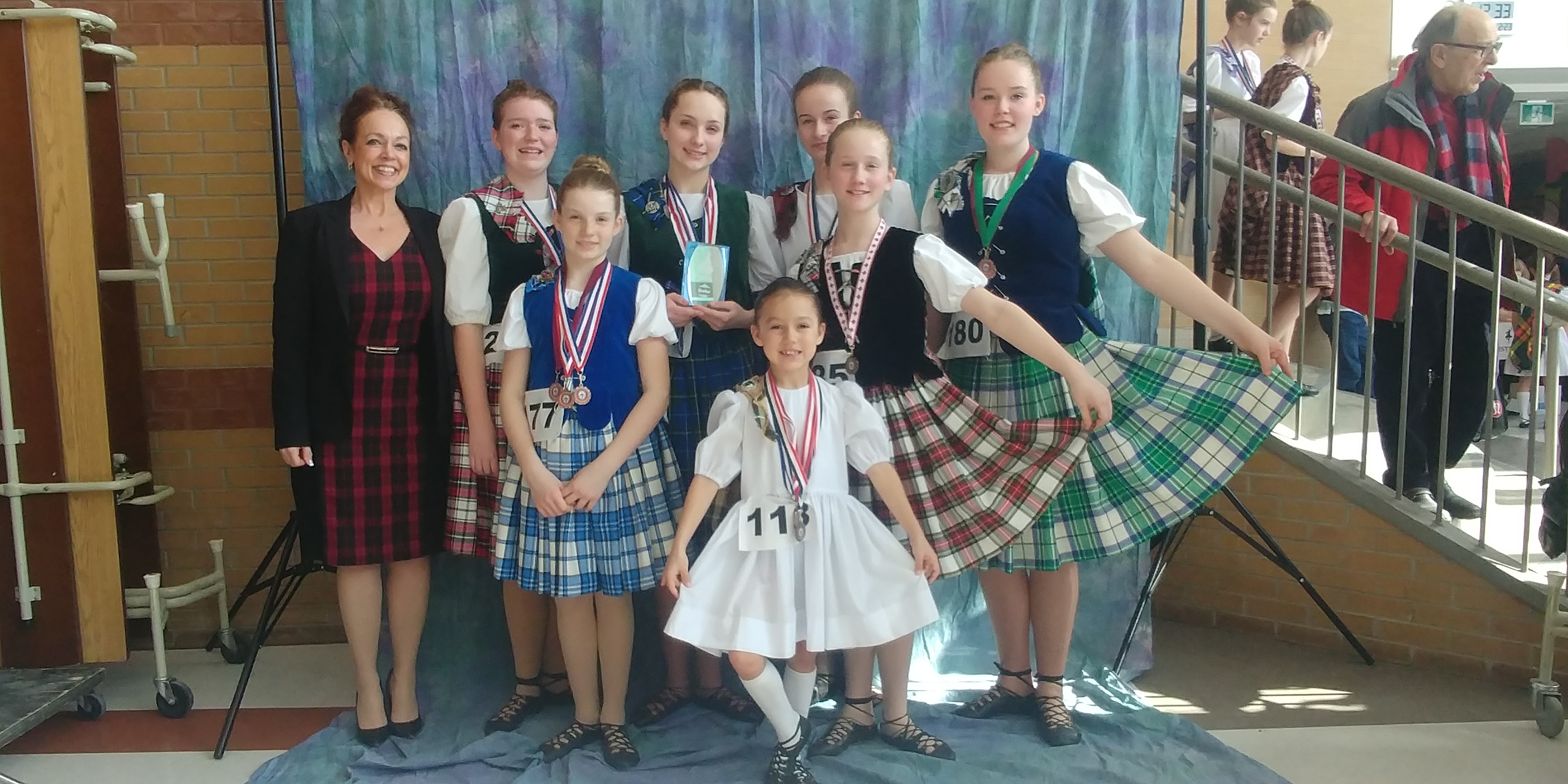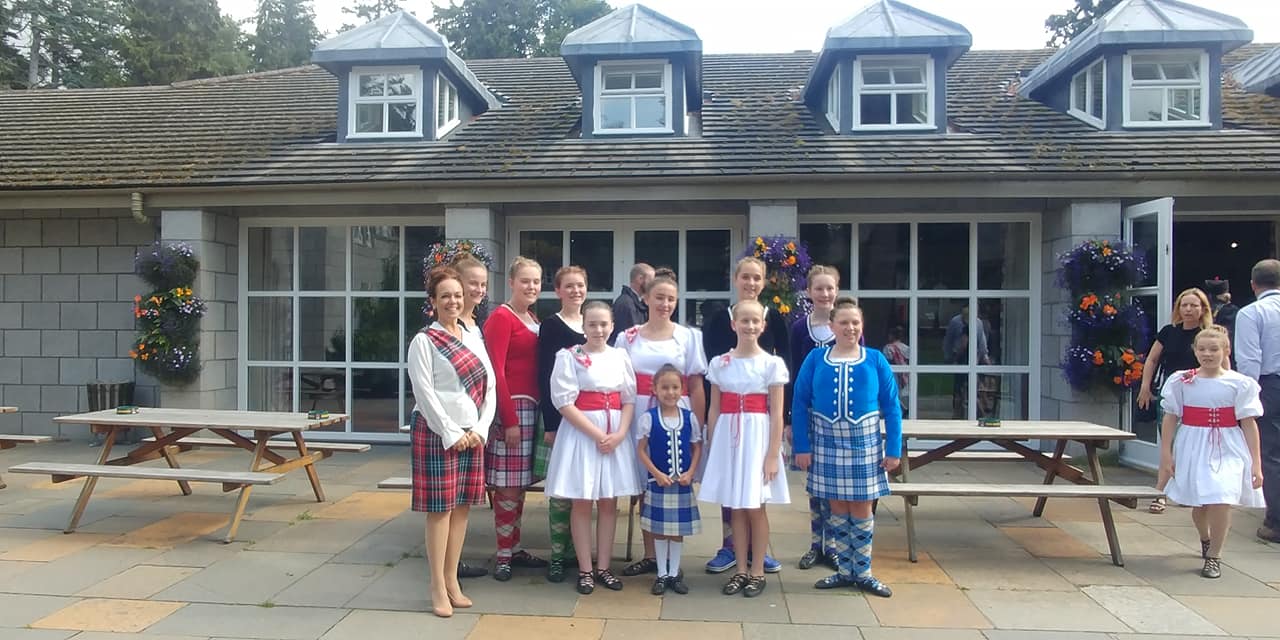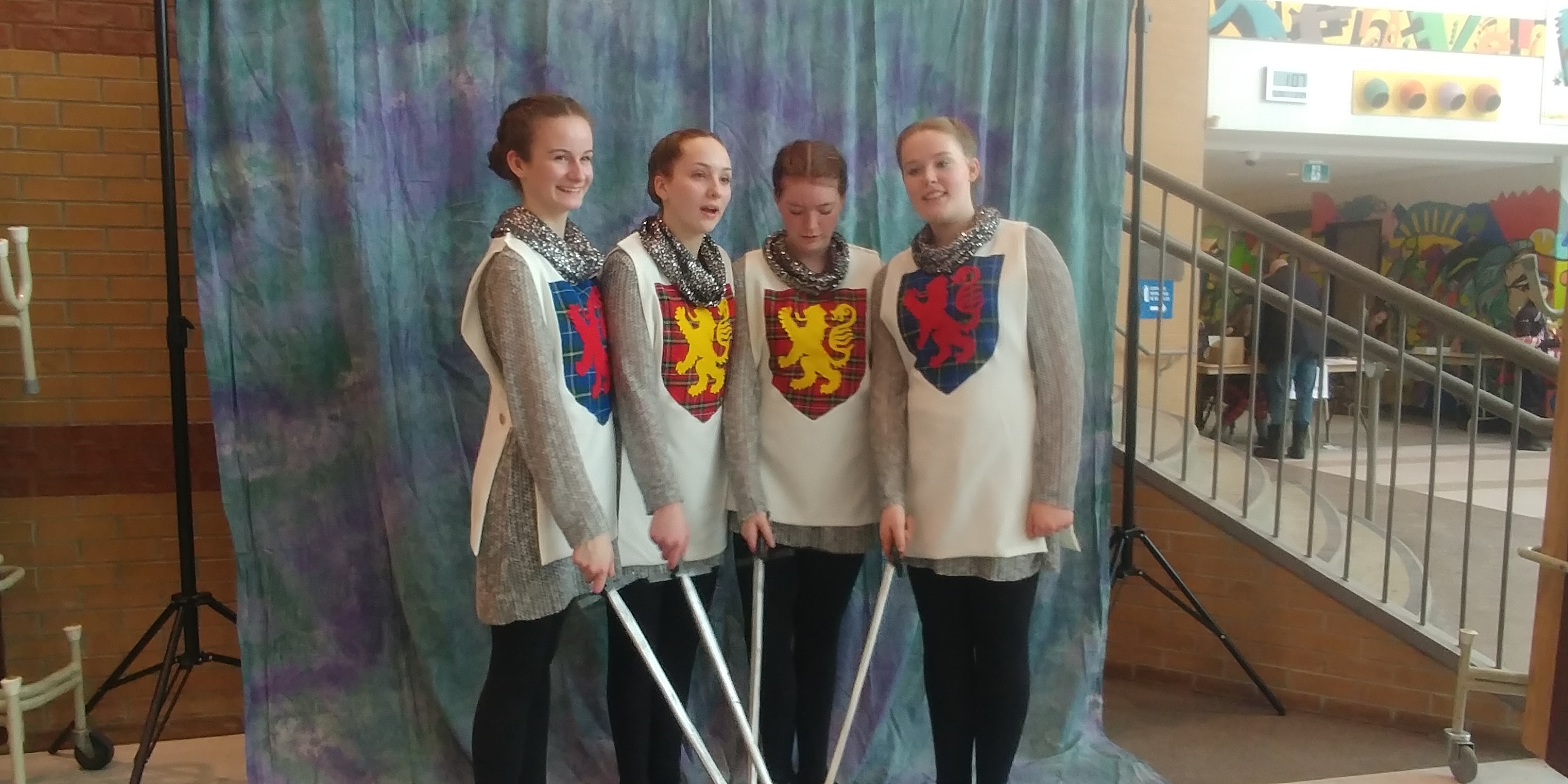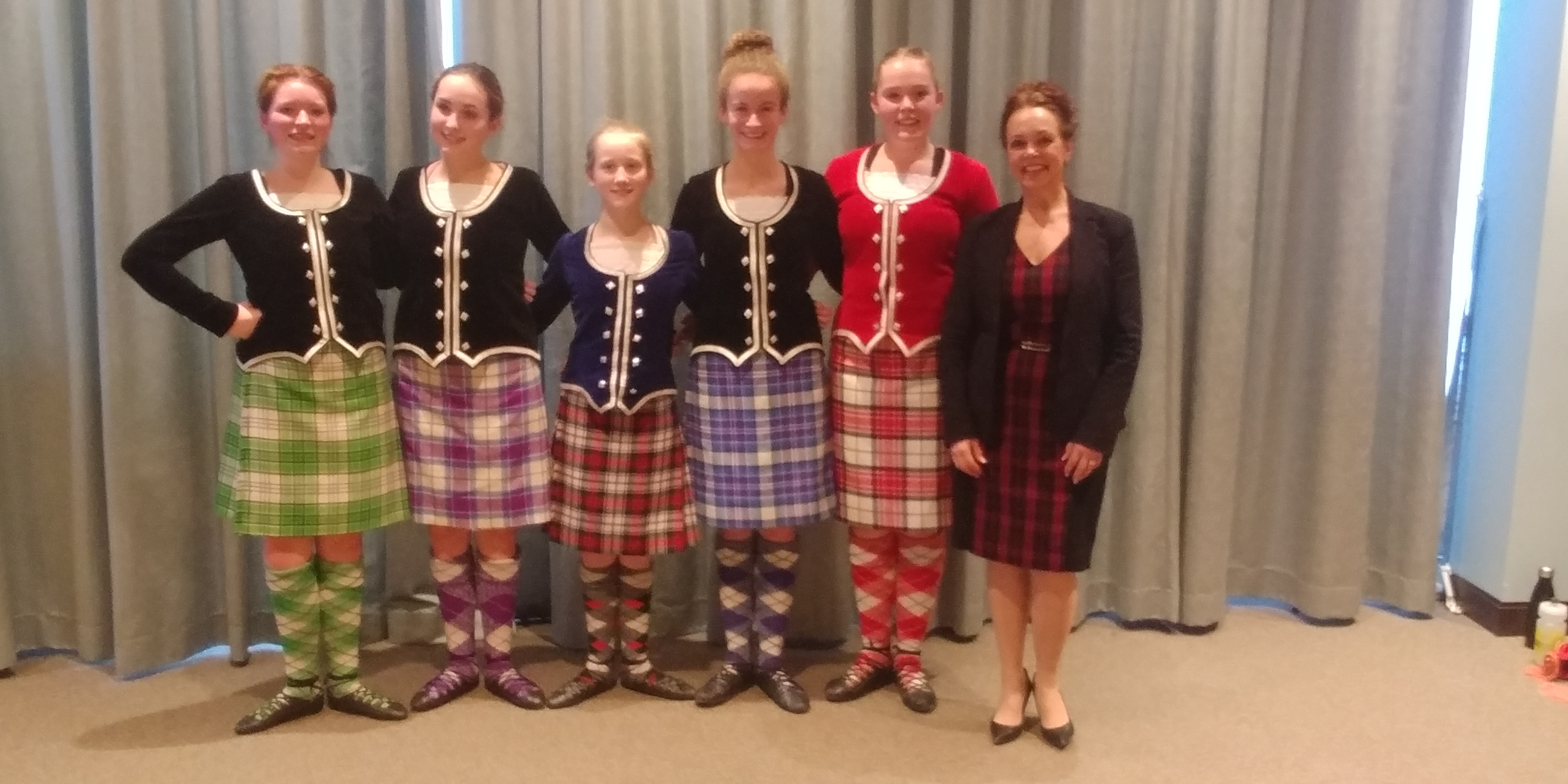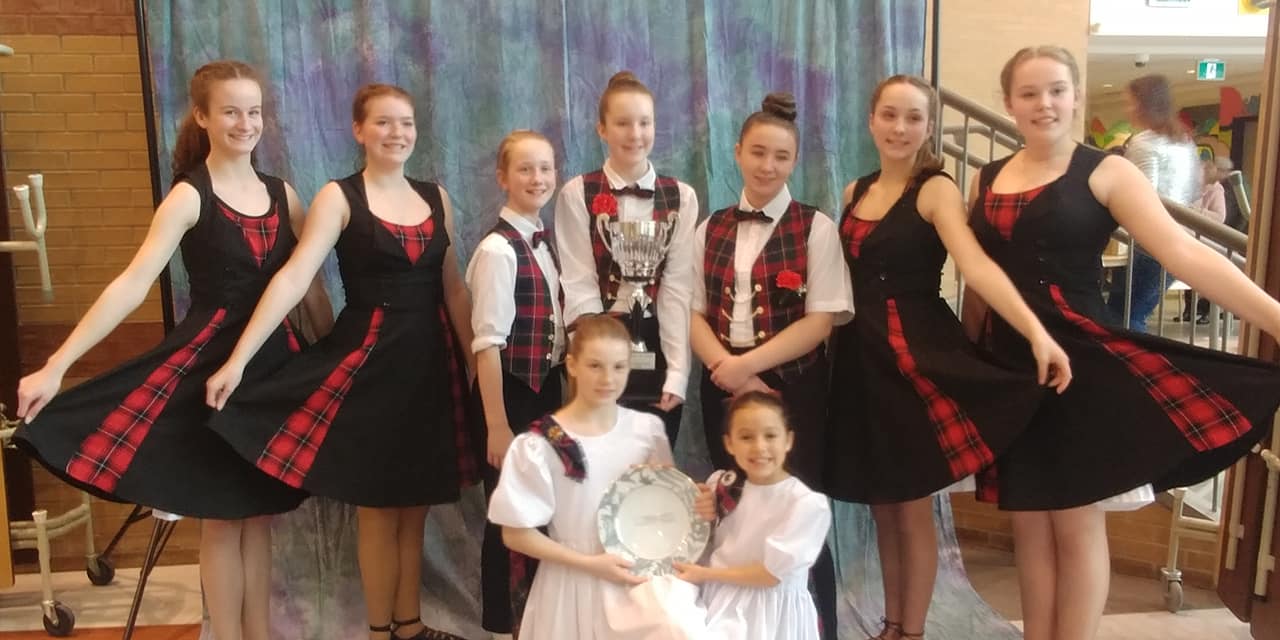
Highland and National Dances
Highland Fling
Together with the Sword Dance, the Highland Fling is probably the most famous of the Scottish Highland Dances. Tullochgorm was the earliest form of Highland Fling, but towards the end of the 18th century it had undergone changes and improvements. It is thought to have evolved about 1790, when legend has it that a shepherd boy on a hillside watched stags rearing and wheeling. The boy tried to copy the stag’s antics and hence we have the graceful curve of the hands and arms depicting the stag’s antlers.
The dance should be danced on the same spot throughout, because clansmen traditionally danced on their targes (leather covered studded shield).
Sword Dance
Originated in 1054 when Malcolm Canmore crossed his sword over the sword of his slain opponent, symbolizing the sign of the Cross, and danced over them in exultation. After that, the dance would be performed before a battle. If the sword was touched it was deemed to be a bad omen! Before 1850, the steps were danced clockwise round the sword, not anti-clockwise as nowadays.
Seann Triubhas
Said to reflect the Highlanders contempt at having to wear trousers when the kilt was prohibited after the 1745 rebellion. The Act of Proscription in 1746 banned the wearing of Highland dress, the carrying of arms and the playing of bagpipes. In other words, the dance originated as a political protest. The slow tempo shows the dancers attempt to shake off the offending garment and the fast tempo shows the pleasure at the rescinding of the ban in 1782. Many of the movements are balletic and are influenced by French style of embellishments such as pirouettes.
Strathspey & Highland Reel
Very little reliable information is known about the origin of Strathspeys and Reels, but they are known to have been danced towards the end of the 17th century and Jacobite days. The slow movement is thought by many to be a mourning dance following the path of the river “Strath” in the valley of the “Spey”. The Highland Reel is a quicker and livelier form of the Strathspey and was known to have been taught from about 1740.
Blue Bonnets
This dance portrays a young women trying to catch the attention and flirt with a blue bonnet. Blue Bonnet was slang for Scotsmen because they wore blue hats.
Village Maid
This dance has a ballet look and feel. This is one of dances where the dancer can step on the flat foot in certain movements.
Scottish Lilt
The Lilt exemplifies National dances, as it is very graceful and heavily influenced by ballet. It is an unusual dance because it has only six beats per measure rather than the standard eight.
Flora MacDonald's Fancy
This is danced in honor of Flora MacDonald, who helped Bonnie Prince Charlie escape to the Isle of Skye. In 1746, this intrepid young Scotswoman helped Bonnie Prince Charlie escape to France after his defeat at the Battle of Culloden. Such heroism won her the admiration of the Scottish people who honoured her in this dance.
Wilt Thou Go To The Barracks Johnny?
This is a recruiting dance. A recruiting officer would go into a village with a dancer as entertainment, or to attract people to his temporary recruiting station. Some say that each regiment had its own dance, but this is the only one widely practiced.
Highland Laddie
This dance was devised by soldiers in the First World War I and is featured often at dancing competitions. It is always danced to the famous tune of the same name. This dance is also a tribute to the Highland Laddie, Bonnie Prince Charlie.
Scotch Measure
When this is danced solo it is called the Scotch Measure. When it is danced with two people, one dancer taking the male role and one the female role, it is called the Twa Some. It is supposed to depict the Scottish dating ritual.
EARL OF ERROL: This was originally a dance performed in hard shoes, which was choreographed for the Earl of Errol. Errol is a small town in Aberdeenshire. Although it looks quite easy, it is perhaps one of the hardest National dances to perform well.
Character Dances
The Scottish Version of the Irish Jig
The Scottish version is meant to be a parody of an Irish washerwoman in an agitated frame of mind. Irish Jig is another energetic dance featuring lots of fist shaking and skirt flouncing among female competitors. It is a parody of Irish dancing and the infamous Irish temper. The story of the dance is as follows: Females dancing the Jig are acting out an angry fit of an Irishwoman chasing two little boys who have stolen her laundry from the clothesline and are running away. Males dancing the Jig act out the happy-go-lucky Irishman facing his wife’s tirade. It is the other National dance that has its own costume rather than the standard Highland or National outfits.
The Sailor's Hornpipe
This dance is common to many parts of the British Isles. It derived its name from the fact that usually the musical accompaniment was played on a hornpipe rather than on bagpipes. Hornpipes were common instruments in those days; they were comparable to our present-day tin whistle. In time the dance became popular among seafaring men and is now associated with sailors. The modern Hornpipe imitates many shipyard activities common in the days of wooden ships and iron men.

